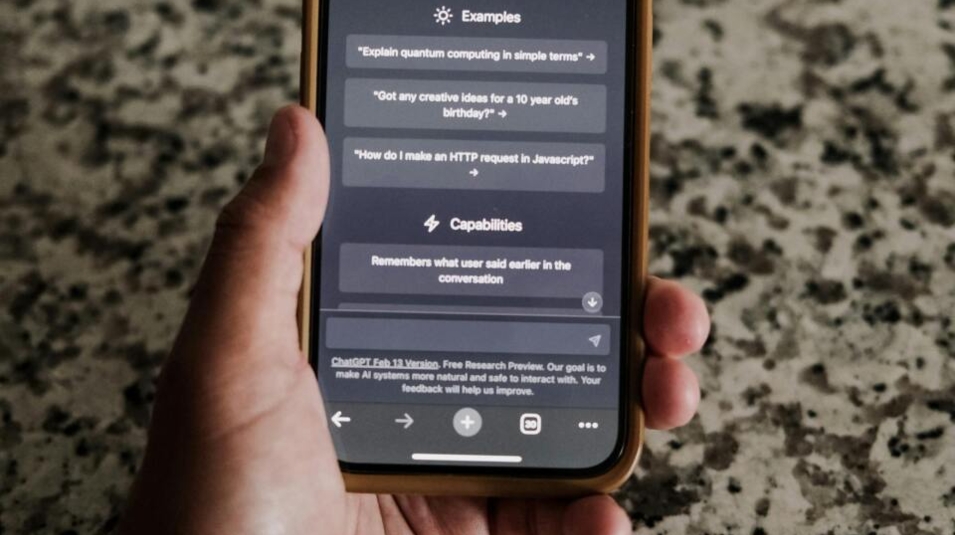AI and communication: why posting more isn’t always the answer
Since the rise of ChatGPT, automated text generators and AI writing assistants built into social platforms, the number of AI-powered content creation tools has skyrocketed. And with them, one seductive promise: post faster, more often, with less effort. The idea is appealing.

It speaks to overwhelmed teams and business owners who feel they “have to be visible” online but don’t know where to start. On paper, it solves everything: no more blank pages, no more daily content stress, no more gaps in the posting schedule. But here’s what many forget: posting more doesn’t mean communicating better. In digital strategy, the goal is not to fill feeds. It’s to deliver useful, relevant content aligned with your brand and business goals.
So should we really produce more with AI? Or should we rethink how we use it to focus on quality, clarity and impact? At ComInTime, we’ve made our choice: AI should help you think better, not flood the internet. Here’s why.
I: The risk of content overload: when AI becomes noise
With AI tools now widely accessible for content creation, a dangerous trend is emerging: mass automation without strategic thinking. In just a few clicks, AI can churn out a dozen LinkedIn posts, a series of tweets, a blog article or even a video script—without you lifting a finger. But this time saved comes at a cost: loss of meaning. Many of these posts are generic, lifeless, and forgettable. They repeat clichés, stock phrases, and overused formats. You’ll see the same intros (“What if we told you…”), the same transitions (“But that’s not all!”), and the same conclusions (“Ready to take the leap?”). Once read, they vanish.
The result: these posts don’t create connection. They don’t engage. They don’t spark conversation. And most importantly, they don’t serve any clear strategic purpose. They exist just to “put something out there”.
LinkedIn’s algorithm has caught on. It no longer rewards volume, but quality, consistency, authenticity and relevance. One well-crafted post, aligned with your audience and your goals, can drive ten times more engagement than an AI-generated stream of fluff. It builds trust. It reinforces your brand. It supports your strategy. In other words, content overload weakens your communication. Too much content kills attention. Too much automation kills interest. Used without purpose, AI becomes a counterproductive content machine.
II: What thoughtful AI can actually do for your communication
When used wisely, AI can support your strategy—not by producing more, but by helping you produce better. But for that to happen, we need to reset our expectations. A well-designed AI isn’t meant to “replace” the human voice, but to work with it. It becomes a co-pilot that helps structure ideas, clarify direction, and spark new angles. It can help you refine your audience (who are you speaking to?), your message (what are you trying to say?), your format (where should it be said?), and your communication goals (why does it matter?). It can suggest fresh perspectives, rephrase your ideas more impactfully, or highlight connections between topics you hadn’t seen before. In this model, AI is not a content generator. It’s a tool for clarity and alignment. It doesn’t spit out ten posts at once. It helps you build the one that matters—the one that makes sense, that reflects your brand, and that speaks to your audience.
Most importantly, it saves you time where it counts: in formulating, organizing, and planning your message—not in blindly generating volume. With this approach, intent becomes the center of your content strategy. You regain control. AI becomes a decision-making aid, not an automated publishing robot.
III: The ComInTime approach: AI for thinking, not overproduction
At ComInTime, we’ve made a clear choice: to use AI as a lever for strategic intelligence, not as a post-producing machine. Our entire platform is built around a core belief: communication only creates value when it’s intentional, aligned and measurable. Practically, the AI inside ComInTime doesn’t just write posts randomly. It first helps you define your foundations: your goals, your audience, your channels and your key messages. It guides you through the creation of a clear, structured communication strategy, even if you’ve never done this before.
Once your strategy is in place, the AI suggests relevant topic ideas, which you can swipe based on their relevance to your goals. It offers angles of approach, drafts a sample post, and lets you validate, modify or enhance it. And crucially, every content idea is linked to a specific strategic objective. Nothing is random. This makes ComInTime a true strategic assistant. It doesn’t replace you—it structures, supports and inspires you. It helps you publish less, but better: with coherence, with clarity, and with impact.
It’s a radically different model from generic AI generators. No mass content dumps. No vague templates. Just tailored suggestions, grounded in your vision, your day-to-day reality, your constraints, and your business goals.
AI in communication is a powerful tool. It can help you save time, unblock creative roadblocks, and structure your thinking. But only if you use it with intention. Producing content has never been easier. But producing useful, strategic and impactful content still takes method, perspective and clarity.
With ComInTime, you don’t post just to post.
You communicate with meaning. And that makes all the difference.
